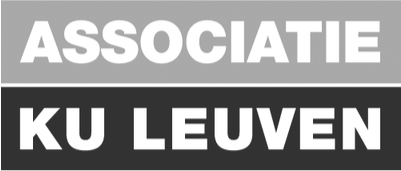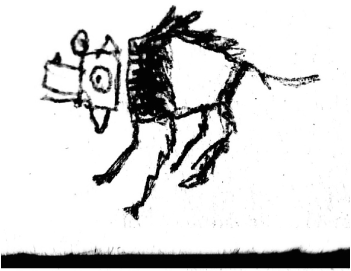
Book impressions
I bought this book at the Gulbenkian Museum store when I was in Portugal, organising a victim support conference at the Gulbenkian Foundation. During a lunch break, I had the chance to see their incredible collection of paintings — Degas, Monet, Rubens, and Rembrandt — an unbelievable heritage nestled within the Foundation’s gardens.
I found myself wondering: Who was this man who managed to assemble such a collection? How did he do it? And how is this remarkable museum in Portugal, while its founder had an Armenian surname? So, I bought the book.
While reading, I realised I had already crossed paths with Gulbenkian’s legacy a year earlier, when we stayed at the Buçaco Palace Hotel, deep in the Portuguese forests. From the book, I learned that this was the place where Gulbenkian’s wife, Nevarte, spent her springs.
Now, having finished Jonathan Conlin’s Mr.Five Per Cent, I feel as if I have been walking alongside Calouste Gulbenkian — a boy who once dreamed of becoming an astronomer but who, obeying his father’s wishes, turned his imagination to something very different: oil. By the time of his death, Gulbenkian had become the richest man on earth — not because he drilled wells or built pipelines himself, but because he mastered the art of negotiation and the architecture of international collaboration.
What struck me first is how much his inner world shaped his outer success. He had, as Conlin shows, a “gifted negotiator’s” network of contacts, a “relentless focus and softly spoken persuasiveness.” He worked not for obligation but out of a profound devotion: “I rely on you to put more soul into your work, and not do it because you are obliged to; if you do not love work educate yourself to love it. Everything in life is bound up with will-power and thus you get to see things in a totally different light.”
Gulbenkian was not the first to see Mesopotamia’s oil potential, but he was behind the Red Line Agreement — the ultimate expression of his idea that oil should be developed in an orderly way through cooperation, not chaos. He made people believe he alone had privileged access to “mysteriously oriental regimes,” even though this access was “more apparent than real.” It amazes me that his only visit to an oil field was in 1888, in Baku — he never set foot in any Arab country, or even the United States. His true strength was that he didn’t focus on operations — he focused on structures.
The book made clear how Gulbenkian’s success was built on the idea that no single company or nation should act alone. This was visionary, especially for his time — the pre-1914 world of robber barons, free trade, and the first era of globalization. His supernatural business structure, as Conlin shows, was “more global in 1914 than in any decade up till the 1990s.”
What I also learned was how oil shaped whole countries. In 1918, French oil policy focused on Romania, the Caucasus, Mesopotamia, and Persia. In 1919, Persia went under British protectorate; Bessarabia too, under British and Canadian loans. In 1920, Britain received a League of Nations mandate to establish a new country named Iraq — showing how new borders were literally drawn around oil.
In 1920, US Secretary of the Interior Franklin Lane claimed American oil reserves would run out by 1937, which would leave American consumers at the mercy of British oil. To avoid this, the US pushed into Mesopotamia’s resources. Meanwhile, America’s control of steel exports gave them power to “paralyse oil developments in all countries which look for the steel supplies to produce pipeline infrastructure.” These details from the book revealed to me how oil, steel, and geopolitics have always been inseparable.

The Red Line Agreement of 1928
The peak of Gulbenkian’s career came on July 31, 1928, when the huge oil field in Iraq led to the signing of the Red Line Agreement in Ostend, Belgium. The deal involved Anglo-Persian, Royal Dutch/Shell, the Compagnie Française des Pétroles (CFP, later Total), and the Near East Development Corporation. They agreed to split the Turkish Petroleum Company’s oil 23.75% each, and the remaining 5% — the “Five Per Cent” that made Gulbenkian legendary — went to him alone. They could operate anywhere in the old Ottoman Empire between the Suez Canal and Iran, except Kuwait. The ‘self-denying’ clause meant that no one company could develop oilfields inside this area without the others’ approval. I see the image of Gulbenkian drawing the Ottoman borders with a red pencil — turning an old empire’s outline into an enforceable deal.
Beyond the Middle East, in 1928 Venezuelan President Gómez and Torres got $1.3 million each to let Royal Dutch Shell and Jersey Standard control 92% of Venezuela’s oil. That same year, Gulbenkian was buying masterpieces from the Hermitage.

Rembrandt ‘Palas Atena’ at the Gulbenkian Museum in Lisbon
The Soviets forced each museum to meet a sales target — what they called “Hermitage junk.” Gulbenkian snapped up Rubens’s Helene Fourment, Houdon’s Diana, and Rembrandt’s Titus, Pallas Athene, and Old Man for millions of pounds. It’s astonishing to think that oil profits saved these artworks from vanishing into private vaults forever.
In 1932, British Oil Developments secured a 75-year concession in western Iraq. Then in 1943, President Roosevelt declared the defense of Saudi Arabia a “vital US interest,” cementing America’s stake in Middle Eastern oil.
Yet Gulbenkian stayed skeptical to the end. He saw through every attempt by oil companies to appear benevolent. For him it was all, as he put it, “eyewash.” The Anglo-American Petroleum Agreement of 1944 promised an “open door,” but in reality it was “hermetically sealed once the Americans entered.” I came away understanding how his realism gave him an edge over others lost in their illusions of “co-prosperity spheres” and “support for democracy.”
What moves me most is that for all this, Gulbenkian’s mind kept drifting back to gardens and nature. He once said, “There are two great life objectives that have eluded me (poor me whom everyone envies): to be a scientist, and to be a dreamer in a garden designed just the way I want it.” In 1927, he bought the estate of Les Enclos near Deauville to create his dream garden. He banned hunting, welcomed birds, and hired Achille Duchêne, the “Napoleon of paysagistes,” to bring his vision to life. About buildings, he believed “the best buildings are like books, which reveal themselves chapter by chapter.”
Reading Five Per Cent left me thinking that Gulbenkian’s real legacy isn’t oil or money — it’s his belief that order could be found amid chaos if you looked carefully and patiently enough. He showed how silent influence could outlast the noise — how, true to his favourite proverb, “the dogs bark, but the caravan passes.”
Today, what remains is PARTEX, the upstream oil company still owned by the Gulbenkian Foundation. But what I take from this book is bigger: a lesson that imagination, subtlety, and iron self-discipline can reshape the world — even if all you wanted, once upon a time, was to study the stars.









